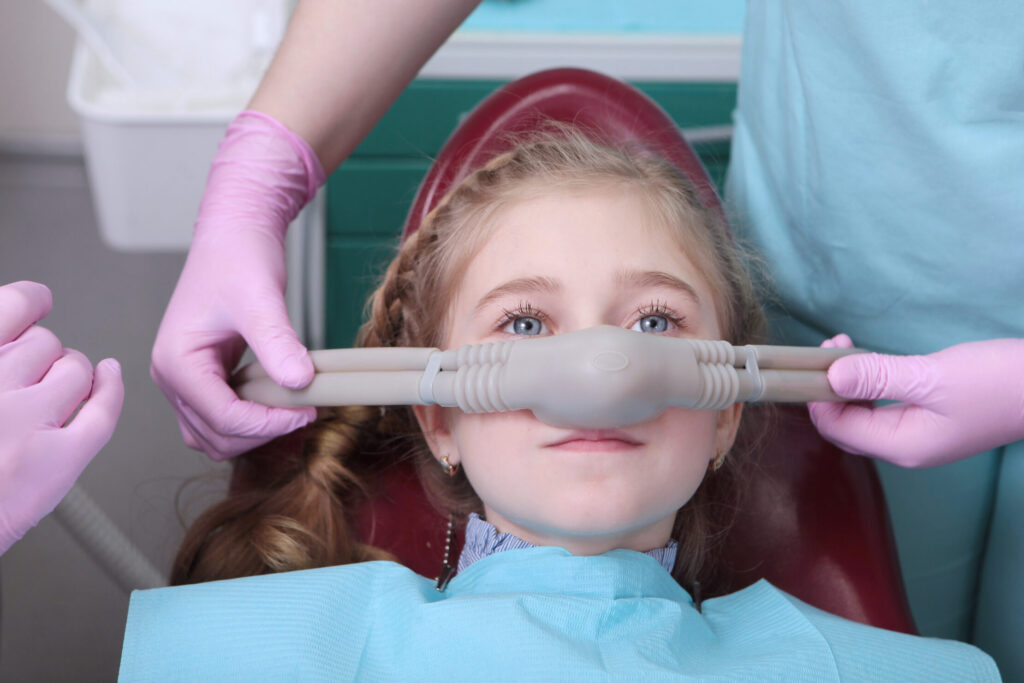Sedation Options: Understanding Your Choices
Dental anxiety is a common issue that many people face when it comes to visiting the dentist. The fear or phobia of dental procedures can be so overwhelming that some individuals avoid necessary dental care altogether. However, avoiding dental treatment can lead to serious oral health problems. This is where sedation dentistry comes in. Sedation dentistry uses medication to help patients relax and feel comfortable during dental procedures. It provides a solution for those who experience dental anxiety or fear, allowing them to receive the dental care they need.
In this blog, we will explore the different types of sedation options available at Palm Beach Periodontics and help you understand which one may be the best choice for you. We will discuss the importance of patient comfort, the various types of sedation used in dentistry, such as nitrous oxide and oral conscious sedation, and the factors to consider when choosing a sedation option. By the end of this blog, you will have gained a deeper insight into sedation dentistry and the options at your disposal.
Understanding Sedation in Dentistry
Sedation dentistry is a practice that aims to help patients feel relaxed and comfortable during dental procedures. It involves the use of medication to induce different levels of sedation, depending on the patient’s needs and the complexity of the dental procedure.
The Importance of Patient Comfort
Ensuring patient comfort is a key focus in dentistry, with sedation choices being essential for a positive experience. Creating a relaxed setting encourages patients to undergo required treatments and uphold their oral health. Sedation also aids in pain management, improving the tolerance of dental procedures for those with low pain thresholds or sensitive teeth.
Types of Dental Sedation: An Overview
At Palm Beach Periodontics, we provide various types of dental sedation based on the patient’s requirements and the nature of the dental treatment. Our sedation options include Nitrous Oxide and Oral Conscious Sedation.
Nitrous Oxide Sedation Explained
Nitrous oxide, commonly known as laughing gas, is a type of sedation used in dentistry to help patients relax during dental procedures. Administered through a mask placed over the patient’s nose, this colorless and odorless gas allows patients to remain awake but feel relaxed and comfortable. With both sedative and analgesic properties, nitrous oxide is an effective option for managing dental anxiety and providing pain relief. Considered safe and used in dentistry for many years, it is a popular choice for patients seeking a comfortable experience during their dental visits.
How Does Nitrous Oxide Work?
Nitrous oxide works by affecting the levels of certain neurotransmitters in the brain, leading to a sense of relaxation and reduced anxiety. When inhaled, nitrous oxide quickly enters the bloodstream and reaches the brain. It has a rapid onset of action, allowing patients to feel its effects within minutes. Nitrous oxide also has analgesic properties, meaning it can help to alleviate pain during dental procedures.
During the administration of nitrous oxide, the patient’s vital signs, such as blood pressure and heart rate, are closely monitored to ensure their safety. The dentist can adjust the level of sedation as needed to maintain the patient’s comfort throughout the procedure. Once the dental treatment is complete, the patient is typically given oxygen to help flush out the nitrous oxide from their system and return to a normal state.
Advantages of Nitrous Oxide Sedation
Nitrous oxide sedation offers several advantages for both patients and dentists. Some of the key benefits include:
- Minimal Sedation: Nitrous oxide induces a state of minimal sedation, where the patient remains awake but relaxed. This allows patients to remain conscious during the procedure and cooperate with the dentist’s instructions.
- Quick Recovery: Unlike other forms of sedation, the effects of nitrous oxide wear off quickly once the administration is stopped. This allows patients to recover and resume their normal activities shortly after the dental procedure.
- Safety: Nitrous oxide is considered safe when administered by a trained professional. It has been used in dentistry for many years and is well-tolerated by most patients.
- Anxiety Reduction: Nitrous oxide helps to reduce anxiety and fear, allowing patients to feel more comfortable and at ease during dental procedures. This can make the dental experience more pleasant and increase patient satisfaction.
What is Oral Conscious Sedation?
Oral conscious sedation is another commonly used sedation option in dentistry. It involves taking a pill before the dental procedure to induce relaxation and reduce anxiety. The level of sedation can range from minimal to moderate sedation, depending on the dose given. Oral conscious sedation, also known as oral sedation, allows patients to remain awake and responsive during the procedure, but they may feel groggy and may not remember much of the treatment. This form of sedation is particularly useful for individuals with dental anxiety or those who require extensive dental work.
The Advantages of Oral Conscious Sedation
Oral conscious sedation is the favored option for a significant number of dental patients due to its multitude of benefits. Some of the primary benefits include:
- Effectively reducing anxiety and promoting relaxation
- Allowing patients to remain conscious and cooperative during treatment
- Adjusting dosages to suit individual needs
- Providing longer-lasting effects than nitrous oxide for extended relief
- Improving patient comfort and satisfaction during dental appointments.
Preparing for Oral Conscious Sedation
Before undergoing oral conscious sedation, there are some preparations that need to be made. These include:
- Medical History Review: The dentist will review the patient’s medical history to ensure that oral conscious sedation is a safe and appropriate option. It is important to disclose any allergies, medications, or medical conditions.
- Fasting Instructions: Depending on the specific medication used for oral conscious sedation, patients may be required to fast for a certain period before the procedure. This is to avoid any potential complications during sedation.
- Transportation Arrangements: Since oral conscious sedation can cause drowsiness and impair motor skills, patients will need someone to drive them to and from the dental appointment. It is important to have a responsible adult accompany the patient for their safety.
Choosing the Right Sedation Option for You
Choosing the right sedation option for dental procedures depends on various factors. These include the patient’s medical conditions, the type and complexity of the dental procedure, and the patient’s comfort level. By considering these factors, dentists can determine the most appropriate sedation option to ensure a safe and comfortable experience for the patient. It is essential for patients to communicate their concerns and preferences to their dentist, allowing them to make an informed decision together.
Factors to Consider
When considering a sedation option for dental procedures, several factors should be taken into account:
- Medical Conditions: Patients with certain medical conditions may require specific considerations when choosing a sedation option. It is important to disclose any medical conditions to the dentist for a thorough evaluation.
- Dental Procedures: The type and complexity of the dental procedure may influence the choice of sedation. More invasive or lengthy procedures may require deeper levels of sedation, such as IV sedation or general anesthesia.
- Patient History: The patient’s dental and medical history can provide valuable information to determine the most suitable sedation option. Dental anxiety, previous experiences, and medication use should all be considered.
- Anxiety Levels: The level of anxiety or fear experienced by the patient can guide the choice of sedation. Patients with severe dental anxiety may benefit from deeper levels of sedation, while those with milder anxiety may find minimal sedation sufficient.
The Role of the Dental Team in Sedation
The dental team plays a vital role in providing sedation dentistry and ensuring the safety and well-being of the patient. Each member of the team has specific responsibilities to ensure a smooth and comfortable dental experience. These responsibilities include:
- Training and Certification: Each member of the dental team undergoes specialized training and certification in sedation dentistry. This training ensures that they have the necessary knowledge and skills to administer sedation safely and effectively.
- Emergency Procedures: The dental team is well-versed in emergency procedures and is trained to handle any potential complications that may arise during sedation. This includes recognizing signs of distress, providing appropriate interventions, and ensuring patient safety.
- Continuous Education: The dental team stays up to date with the latest advancements and guidelines in sedation dentistry through continuous education and training. This allows them to provide the highest level of care to patients undergoing sedation.
By fulfilling their responsibilities and staying current with training and certifications, the dental team ensures a safe and comfortable experience for patients undergoing sedation.
Contact Palm Beach Periodontics Today
Understanding your sedation options in dentistry is crucial for ensuring a comfortable and stress-free dental experience. Whether it’s nitrous oxide sedation or oral conscious sedation, each option comes with its unique benefits and considerations. By being informed about your choices and actively participating in decision-making, you can pave the way for a relaxed and positive dental visit. Get in touch with Palm Beach Periodontics today to have your sedation queries addressed.












